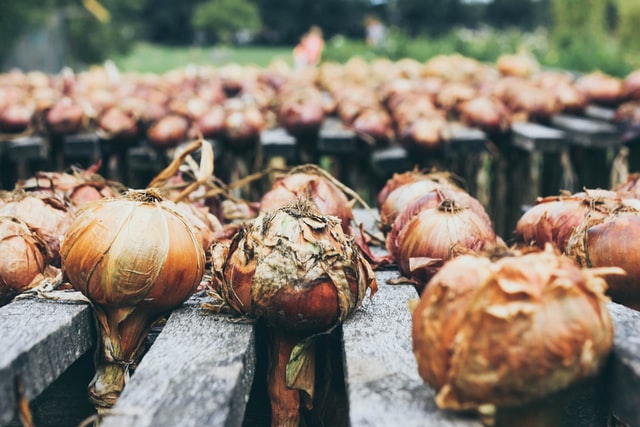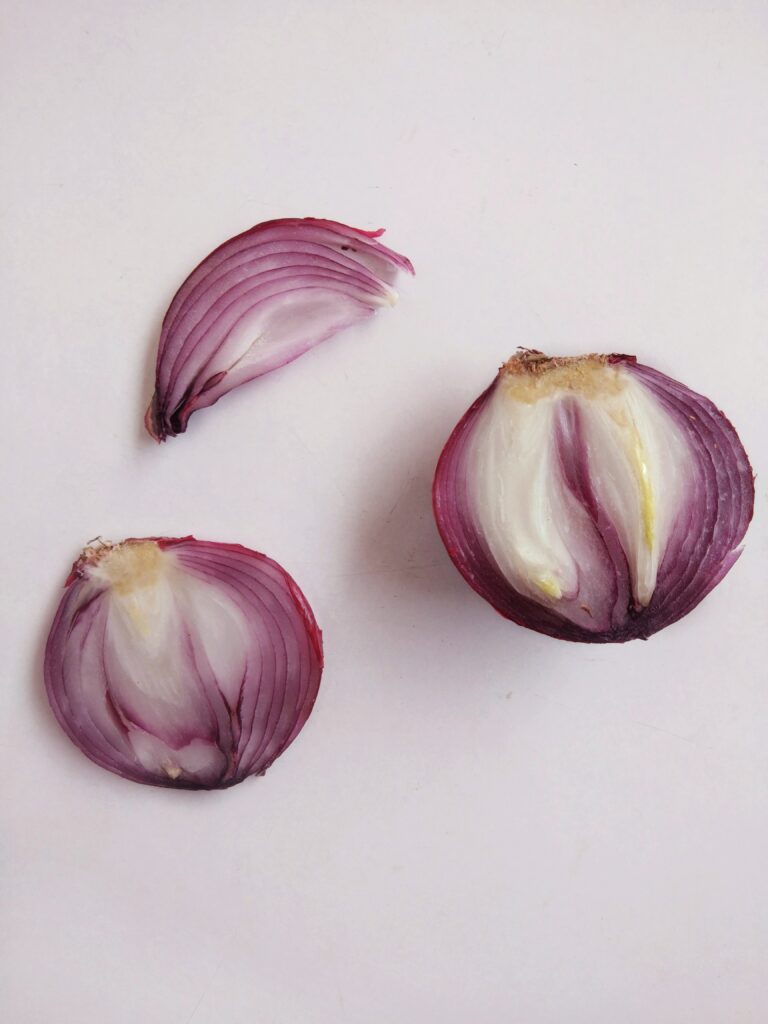If you work with Primary aged children, you might find our simplified science led onion fact file useful.

Know your onions
- The onion is in the family Amaryllidaceae or amaryllis with the large genus Allium comprising of edible bulbs which also includes garlic, chives and leeks.
- The onion Allium cepa is thought to have originated in central Asia and cultivated in India and China since very early times and held in high esteem in ancient Egypt.
- Allium species are monocotyledonous plants with long green leaves. Spring onions, leeks and chives are eaten when young and fresh but the classic onion is grown for their mature bulbs which are storage organs consisting of swollen leaf bases covered by thin scales. The colours vary from white through brown to reddish purple and shape may be globe-shaped or spindle shaped. Interestingly shallots which are characterised by clusters of small bulbs joined at the base are not considered a distinct species but just a variety of onion, Allium cepa var aggregatum.

Chive Flowers
- The onion is a biennial plant producing a storage bulb in the first year and if permitted a flower head in the second. Bulbing is controlled by day–length and temperature with different cultivars for appropriate temperate and tropical latitudes.
- The onion is a very hardy bulb and able to withstand a range of different growing conditions. The shape and size of the bulb can vary as can the characteristic pungency with bulbs grown in warmer climates being generally sweeter and milder in taste.
- Harvested bulbs, if not intended for immediate consumption are subjected to a ‘curing’ process which involves the removal of moisture from the outermost layers. This process reduces the likelihood of fungal or bacterial infection which would lead to spoilage and in a commercial setting marketable value of the crop. A perfectly cured onion would possess a tight neck and crisp rustling outer scales. In countries with a hot dry season the curing process could be performed in the field with the pulled bulbs covered by the green tops of the adjacent row as a means of protection against direct sunlight. In this way field curing could be completed in a matter of days though this would be dependent on the maturity of the bulbs pulled, humidity, temperature and wind speed.
- In the UK with our unreliable climate, onions are cured by an artificial means of drying. This involves blasting stacks of onions with hot air at about 30C with the aim of rapid removal of surface moisture from the bulbs. When the onions at the top of the stack are surface dry the rate of airflow is reduced, but the drying process is continued for up to four weeks until the cell sap moisture in the onion necks has evaporated leaving them tight and dry. Due to the risk of black mould the temperature after the first two or three days the temperature is reduced to 27C.After the curing period is completed the onions need to be kept as cool as possible.
- Sometimes you might see some onions with a fine coating of soot like substance which is not as harmless as it looks. It is a fungus called Aspergillus niger v. Tieghem which gives rise to the condition known as Black mould rot. The symptoms of infection can be seen as clusters of black spores on and between the outer papery scales. The black mould causes a shrivelling of the affected papery scales and may advance into the fleshy scales accompanied by soft rot bacteria. The biology of the fungus permits it to persist in the soil and on crop debris with its spores blown about in the atmosphere. Infection takes place via the neck tissue when the foliage has died down and the crop has reached maturity. Damp rainy conditions are also ideal for this fungus to infect as are dry conditions, a resilient fungus for all seasons!
- Good field hygiene where crop debris is removed and pre-planting fungicide treatment to the soil is an effective means of control. Stopping water supply three weeks prior to harvest also works as does an application of lime to topped bulbs or a fungicide dip or fumigant. Fast drying is still the best post-harvest procedure and refrigerated transport represses development of black mould completely, though it can resume on return to ordinary temperatures such as in store or in the home.
- For the answer to the eternal question as to why do onions make you cry here is a bit more science…
Onion Chemistry Image with thanks to 2014 COMPOUND INTEREST – WWW.COMPOUNDCHEM.COM
Article by Samia Qureshi, Science Learning Officer



